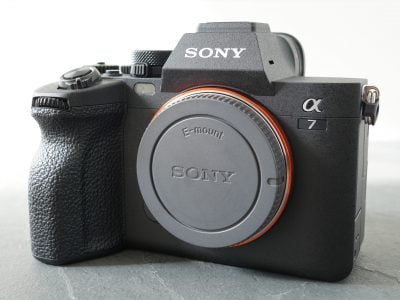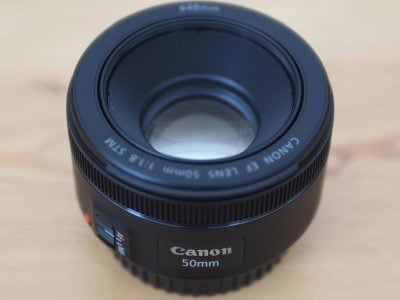Pentax K20D
-
-
Written by Gordon Laing
Pentax K20D resolution comparison
| Support this site by shopping via these links | ||||||||||||||||||||||||||||||||||||||
 |
To measure and compare the Pentax K20D’s resolving power we photographed the Enhanced Digital Camera Resolution Chart with it and a number of rival cameras, each using their best quality JPEG and default image tone and sharpening settings. Each lens was tested at every aperture setting and the best result selected for this page. The crops are taken from the original images, saved as High Quality JPEGs in Photoshop CS2 and presented here at 100%. Each number represents 100 lines per picture height (lpph), so a figure of 20 means a resolution of 2000 lpph. |
In terms of resolving power, the Pentax K20D delivers 2400 lpph of horizontal and vertical resolution when equipped with the DA 18-250mm AL lens. This is a significant improvement over its predecessor the K10D and measurably superior to the Canon EOS 450D / XSi, although as we illustrated on the previous page you may not notice much difference in real-life detail. Compared to the Sony Alpha A350, the K20D is slightly beaten in terms of horizontal resolution, but takes the lead in vertical resolution. Again though, there’s little difference in real-life recorded detail at 100 ISO though. To see RAW results for this test, scroll to the bottom of the page. Alternatively, head straight over to our real-life noise results to see how it performs across its sensitivity range. |
Pentax K20D with Pentax DA 18-250mm f3.5-6.3 AL |
Pentax K10D with Pentax DA 18-55mm f3.5-5.6 AL | |
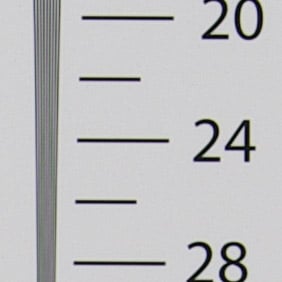 | 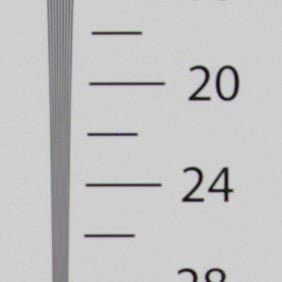 | |
2400 lpph, DA 18-250mm at 35mm, f8, 100 ISO |
2050 lpph, DA 18-55mm at 35mm, f8, 100 ISO | |
Canon EOS 450D / XSi with EF-S 18-55mm IS |
Sony Alpha DSLR-A350 with DT 18-70mm | |
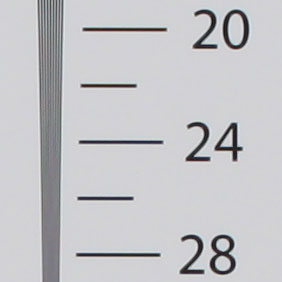 | 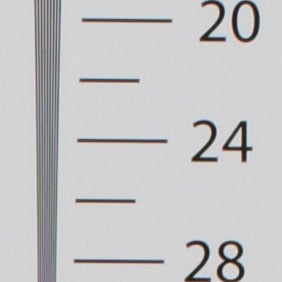 | |
2200 lpph, EF-S 18-55mm IS at 35mm, f8, 100 ISO |
2500 lpph, DT 18-70mm at 35mm, f8, 100 ISO |
Pentax K20D with Pentax DA 18-250mm f3.5-6.3 AL |
Pentax K10D with Pentax DA 18-55mm f3.5-5.6 AL | |
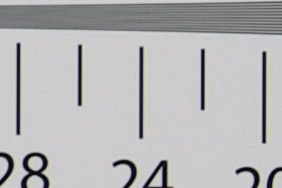 | 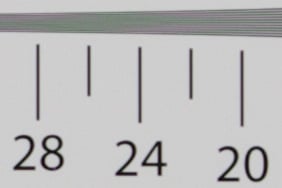 | |
2400 lpph, DA 18-250mm at 35mm, f8, 100 ISO |
2150 lpph, DA 18-55mm at 35mm, f8, 100 ISO | |
Canon EOS 450D / XSi with EF-S 18-55mm IS |
Sony Alpha DSLR-A350 with DT 18-70mm | |
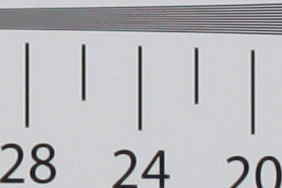 | 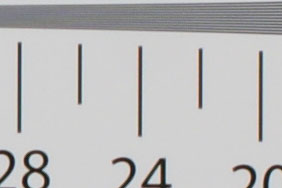 | |
2225 lpph, EF-S 18-55mm IS at 35mm, f8, 100 ISO |
2250 lpph, DT 18-70mm at 35mm, f8, 100 ISO |
Pentax K20D Studio resolution: JPEG versus RAW
We photographed our test chart in the K20D’s RAW plus JPEG mode, allowing us to directly compare images created from exactly the same data. Below are crops taken from the original JPEG file alongside the RAW version (recorded as a DNG file), processed in Adobe Camera RAW using the default settings.
The RAW processing may not have delivered as punchy an image as the in-camera JPEG, but it’s clear there’s a leap in resolving power. We’d say there’s comfortably 2600 lpph in both RAW results below, and remember this is with the DA 18-250mm super-zoom lens, not a premium model. This is an excellent result for the K20D, and as you’ll see, the best is still to come in our Pentax K20D noise results page.
Pentax K20D JPEG with Pentax DA 18-250mm f3.5-6.3 AL |
Pentax K20D RAW with Pentax DA 18-250mm f3.5-6.3 AL | |
 | 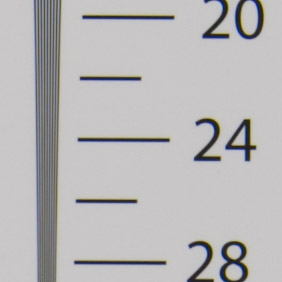 | |
2400 lpph, DA 18-250mm at 35mm, f8, 100 ISO |
2600 lpph, DA 18-250mm at 35mm, f8, 100 ISO |
Pentax K20D JPEG with Pentax DA 18-250mm f3.5-6.3 AL |
Pentax K20D RAW with Pentax DA 18-250mm f3.5-6.3 AL | |
 | 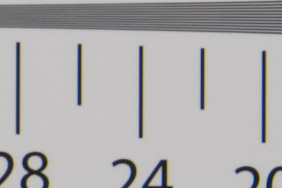 | |
2400 lpph, DA 18-250mm at 35mm, f8, 100 ISO |
2600 lpph, DA 18-250mm at 35mm, f8, 100 ISO |
